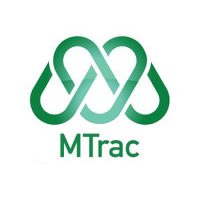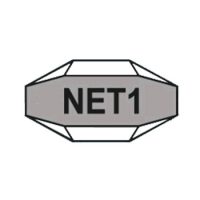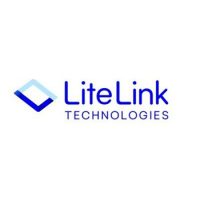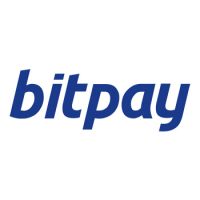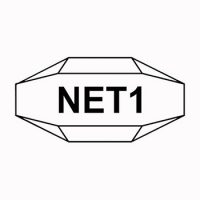Blockchain Press Releases
Defense Geospatial System Market to Reach $367.40 Billion, Globally, by 2032 at 11.4% CAGR: Allied Market Research

The global defense geospatial system market is experiencing growth due to a demand of reconnaissance and surveillance, and Integration with other systems in the defense industry
PORTLAND, Ore., Aug. 9, 2023 /PRNewswire/ — Allied Market Research published a report, titled, “Defense Geospatial System Market by technology (Geographic Information System, Global Positioning System, and Remote Sensing), by type (Surface Analysis, Network Analysis, and Geo Visualization), by application (Military Logistics, Intelligence Gathering, and Battlefield management): Global Opportunity Analysis and Industry Forecast, 2023-2032″. According to the report, the global defense geospatial system market was valued at $126.4 billion in 2022, and is projected to reach $367.40 billion by 2032, registering a CAGR of 11.4% from 2023 to 2032.
Download Sample Pages – https://www.alliedmarketresearch.com/request-sample/14264
Geospatial technology is increasingly important in national security issues, as individuals working in the defense sector can benefit from data exchange. As social media and other platforms create massive amounts of data every second, government agencies may now utilize GIS as a tool to evaluate data and generate meaningful insights. Defense intelligence employs geographic information systems (GIS) to track important data on hotspots and establish preventive actions for future risks to national security and public safety.
Prime determinants of growth
The global defense geospatial system Market is driven by factors such as demand of reconnaissance, and surveillance, and Integration with other systems. However, high cost and lack of accessibility, and concern of data privacy and protection are hampering the growth of the defense geospatial system Market. On the contrary, AI combined with geospatial system, and use of AR and VR in defense Geospatial system is expected to offer remunerative opportunities for the expansion of the defense geospatial system market during the forecast period.
Report Coverage & Details:
|
Report Coverage |
Details |
|
Forecast Period |
2023–2032 |
|
Base Year |
2022 |
|
Market Size in 2022 |
$126.4 billion |
|
Market Size in 2032 |
$367.40 billion |
|
CAGR |
11.4 % |
|
No. of Pages in Report |
280 |
|
Segments Covered |
Technology, Type, Application, and Region |
|
Drivers |
Demand of Reconnaissance, and surveillance Integration with other systems |
|
Opportunities |
High Cost and lack of accessibility Concern of Data Privacy and Protection |
|
Restraints |
AI combined with geospatial system Use of AR and VR in defense Geospatial system |
Impact of Russia–Ukraine war
- Many geospatial system providers offered their services to the Ukraine in the Russia–Ukraine war. For instance, on March 1, 2022, Ukraine’s Ministry of Digital Transformation requested synthetic-aperture radar (SAR) data from worldwide remote sensing enterprises and organizations to support the Ukrainian Armed Forces. SAR technology is a type of earth observation (EO) data that is very important in wartime since it can penetrate cloud cover and give imagery in a variety of weather conditions. The demand from Ukraine helps the technology to market itself in the defense geospatial market.
- The pandemic led to increase demand for defense geospatial system market, as most of the European countries are looking to enhance their geospatial system due to the Russia–Ukraine war.
Procure Complete Research Report Now – https://www.alliedmarketresearch.com/defense-geospatial-market/purchase-options
The Remote Sensing segment to maintain its leadership status throughout the forecast period
Based on technology, the remote sensing segment held the highest market share in 2022, accounting for nearly two-fifths of the global defense geospatial system market revenue and is estimated to maintain its leadership status throughout the forecast period. Remote sensing plays a vital role in defense geospatial applications since they are used for variety of operations including surveillance and reconnaissance. There are several market developments, as well as emerging technologies developed by manufacturers and brought to modern geospatial systems. However, the global positioning system (GPS) segment would cite the fastest CAGR of 12.2% from 2023 to 2032.
The surface analysis segment to maintain its leadership status throughout the forecast period
Based on type, the surface analysis segment held the highest market share in 2022, accounting for more than two-fifths of the global defense geospatial system market revenue and is estimated to maintain its leadership status throughout the forecast period. Geospatial surface analysis assists military forces in assessing the terrain, comprehending the physical environment, and making strategic and tactical decisions. It is also used to map the underwater surface, as in July 2022. Such developments have been creating opportunities for the private players operating in the defense geospatial system market. The network analysis segment, on the other hand, is estimated to showcase the notable CAGR of12.8% during the forecast period.
The intelligence gathering segment to maintain its leadership status throughout the forecast period
Based on application, the intelligence gathering segment held the highest market share in 2022, accounting for nearly two-fifths of the global defense geospatial system market revenue and is estimated to maintain its leadership status throughout the forecast period. The same segment is projected to cite the fastest CAGR of 12.0% from 2023 to 2032. Various countries have dedicated surveillance and intelligence collection services. The National Geospatial-Intelligence Agency (NGA) and the National Reconnaissance Office (NRO), for example, are two departments that support US intelligence. NGO collects and analyses geospatial information before disseminating it to other government agencies such as the military forces and law enforcement, whereas NRO gets essential information using satellites and meets its primary aim of acquiring imagery. NRO supports the US intelligence services in carrying out activities.
North America held the highest market share in 2022
Based on region, North America held the highest market share in terms of revenue in 2022, accounting for more than one-third of the global defense geospatial system market revenue, however LAMEA region and is estimated to gain market domination in the forecasting period with growing CAGR of 13.2%. The domination of North America region is due to the presence of major geospatial companies in the region. Whereas in LAMEA region defense geospatial technology is widely used in military planning, surveillance, and information gathering. One of the prime examples is Israel’s IDF or Israel defense forces which utilizes IDF collects data using signal intelligence, geographical intelligence, and visual intelligence among the others.
Leading Market Players: –
- Airbus
- BlackSky
- NV5 Global, Inc.
- Hexagon AB
- Environmental Systems Research Institute, Inc. (ESRI)
- Trimble Inc.
- Maxar Technologies ON Semiconductors
- MapLarge
- Orbital Insight
- TerraGo
Interested to Procure the Research Report? Inquire Before Buying – https://www.alliedmarketresearch.com/purchase-enquiry/14264
The report provides a detailed analysis of these key players of the global defense geospatial system market. These players have adopted different strategies such as new product launches, collaborations, expansion, joint ventures, agreements, and others to increase their market share and maintain dominant shares in different regions. The report is valuable in highlighting business performance, operating segments, product portfolio, and strategic moves of market players to showcase the competitive scenario.
Similar Reports We Have on Defense Industry:
Geospatial Solutions Market Research Report 2023-2035
Aerial Imaging Market Research Report 2023-2035
Commercial Satellite Imaging Market Research Report 2023-2035
Military RADAR Market Research Report 2023-2035
About Us
Allied Market Research (AMR) is a full-service market research and business-consulting wing of Allied Analytics LLP based in Portland, Oregon. Allied Market Research provides global enterprises as well as medium and small businesses with unmatched quality of “Market Research Reports” and “Business Intelligence Solutions.” AMR has a targeted view to provide business insights and consulting to assist its clients to make strategic business decisions and achieve sustainable growth in their respective market domain.
We are in professional corporate relations with various companies and this helps us in digging out market data that helps us generate accurate research data tables and confirms utmost accuracy in our market forecasting. Allied Market Research CEO Pawan Kumar is instrumental in inspiring and encouraging everyone associated with the company to maintain high quality of data and help clients in every way possible to achieve success. Each and every data presented in the reports published by us is extracted through primary interviews with top officials from leading companies of domain concerned. Our secondary data procurement methodology includes deep online and offline research and discussion with knowledgeable professionals and analysts in the industry.
Contact:
David Correa
1209 Orange Street,
Corporation Trust Center,
Wilmington, New Castle,
Delaware 19801 USA.
USA/Canada (Toll Free):
+1-800-792-5285
UK: +44-845-528-1300
Hong Kong: +852-301-84916
India (Pune): +91-20-66346060
Fax: +1-800-792-5285
help@alliedmarketresearch.com
Web: www.alliedmarketresearch.com
Allied Market Research Blog: https://blog.alliedmarketresearch.com
Logo: https://mma.prnewswire.com/media/636519/Allied_Market_Research_Logo.jpg
![]() View original content:https://www.prnewswire.co.uk/news-releases/defense-geospatial-system-market-to-reach-367-40-billion-globally-by-2032-at-11-4-cagr-allied-market-research-301896730.html
View original content:https://www.prnewswire.co.uk/news-releases/defense-geospatial-system-market-to-reach-367-40-billion-globally-by-2032-at-11-4-cagr-allied-market-research-301896730.html

Blockchain
DTCC partners with Chainlink and JPMorgan to pilot blockchain integration for fund data

As headlines spotlight spot Bitcoin (BTC) exchange-traded fund (ETF) flows and institutions revealing their exposure to BTC ETFs, financial service infrastructure providers are quietly integrating blockchain technology into their systems.
According to a recent report from the Depository Trust & Clearing Corporation (DTCC), the firm conducted a pilot program named Smart NAV in collaboration with Chainlink (LINK). This initiative aimed to extend the capabilities of DTCC’s Mutual Fund Profile Service I (MFPS I), the industry standard for transmitting ‘Price and Rate’ data, also known as ‘NAV data.’
DTCC’s Mutual Fund Services business currently operates MFPS I, offering fund companies an automated solution to deliver prices and daily distribution rates to numerous clients for tens of thousands of mutual fund securities. Traditionally, DTCC collects price and rate data from funds/service providers and distributors, then aggregates and disseminates it at regular intervals through its message queue (MQ) and file-based methods.
The Smart NAV Pilot served as a digital extension of the existing MFPS I service, aiming to broaden and complement its current capabilities. DTCC recognized the growing interest in mutual fund tokenization and saw an opportunity for on-chain price and rate data to facilitate new initiatives. Taking a ‘chain-agnostic’ approach, meaning the ability to disseminate NAV data across virtually any blockchain, was crucial for enabling other use cases to build upon Smart NAV’s foundations.
Ten market participants, including major names like American Century Investments, BNY Mellon, and JP Morgan, collaborated with DTCC and Chainlink on the pilot. They evaluated the feasibility and industry value of implementing a distributed ledger technology (DLT)-based price and rate dissemination solution to unlock new benefits and support experimentation in the asset management space.
The pilot results demonstrated that delivering structured data on-chain and establishing standard roles and processes enabled foundational data to be integrated into various on-chain use cases, such as tokenized funds and bulk consumer smart contracts. This capability can fuel future industry exploration and empower numerous downstream use cases, including brokerage portfolio applications.
The simplest application of Smart NAV is to provide trusted, verifiable data on virtually any blockchain network to support its use in business workflows. During the pilot, DTCC acted as both the provider and governor of the on-chain data solution, while Chainlink’s CCIP served as the interoperability layer. The core capability explored is adaptable across a wide range of use cases, potentially enhancing operational efficiency and streamlining processes.
Based on the positive findings, DTCC sees an opportunity to expand the scope of the pilot to explore broader use cases beyond price and rate data dissemination and across more blockchains.
Source: kitco.com
The post DTCC partners with Chainlink and JPMorgan to pilot blockchain integration for fund data appeared first on HIPTHER Alerts.
Blockchain
Is Donald Trump’s Recent Crypto-Friendly Stance Genuine Or Opportunistic? Experts Weigh In

Presidential candidate Donald Trump recently made a surprising endorsement of crypto, suggesting that he would ease hostility towards cryptocurrencies in the US if re-elected.
Trump stated, “If we’re going to embrace it, we have to let them be,” and urged crypto supporters to vote for him. This marks a significant shift from his previous criticisms of Bitcoin and other cryptocurrencies in 2019, where he labeled them as “not money” due to their volatility and lack of intrinsic value, expressing concerns about their potential use in illegal activities like drug trafficking.
Crypto’s Impact on Voter Preferences
With approximately 20% of American adults reportedly holding crypto, candidates are taking notice. Markus Levin of XYO Network sees embracing crypto and implementing solid regulation as a strategic move in elections and sound policy overall. He believes Trump’s apparent positive stance towards the industry will sway some voters in his favor.
Jonathan Thomas of Blueberry suggests that Trump’s crypto-friendly rhetoric may attract voters who prioritize crypto as a single-issue matter.
Skepticism Surrounding Trump’s Crypto Support
However, not everyone is convinced by Trump’s newfound endorsement of crypto. NFT enthusiast Thorne Melcher views it as “flimsy” and warns against the potential for conservative politics to restrict crypto due to its use in areas such as trans hormone replacement therapy and abortions.
While some may see Trump’s support for crypto as a reason to vote for him, others like Stephanie Vaughan of Veda caution against assuming substantial benefits from this endorsement alone. Vaughan highlights the Biden Administration’s hardline stance on crypto regulation by enforcement, which she believes is unworkable and could push voters towards Trump.
Trump’s Strategy to Attract Crypto Voters
Trump’s pivot from crypto skeptic to NFT enthusiast reflects a strategic move to appeal to voters interested in crypto. Vaughan suggests that many crypto-focused voters may have supported Biden in the last election, but Trump is actively courting them by recognizing the industry’s significance.
By acknowledging crypto’s growing influence on voters, Trump aims to draw support away from Biden, positioning himself as the candidate more aligned with the interests of the crypto community.
Source: cryptonews.com
The post Is Donald Trump’s Recent Crypto-Friendly Stance Genuine Or Opportunistic? Experts Weigh In appeared first on HIPTHER Alerts.
Blockchain
droppGroup Unveils Platform with AI-Blockchain Integration

droppGroup, a trailblazer in amalgamating blockchain and artificial intelligence, has unveiled droppLink, an innovative service platform poised to potentially revolutionize AI management and development across various blockchains. The architecture of droppLink empowers users with control over data contributions, abstracts computational requirements, and streamlines micropayments.
Stakeholders, dubbed Computational Resource Patrons (CRPs), contribute to the infrastructure costs and share profits from the facilitated AI operations.
As a web3 development firm, droppGroup specializes in deploying patented innovations in AI, machine learning (ML), object recognition, streaming, crypto, augmented reality (AR), virtual reality (VR), and mixed reality (MR). droppGroup is now advancing multi-modal AI systems with droppLink.
Gurps Rai, co-founder and CEO of droppGroup, explains that droppLink tokenizes each stage in an AI model’s lifecycle across multiple blockchains, such as Solana, Polygon, Ethereum, Base, and Hyperledger Fabric 2.5, ensuring unparalleled data integrity and expediting AI development.
Rai added, “This process upholds data ownership rights while establishing a transparent, immutable usage record via our Proof of Gen and Data Genesis protocols.”
Christopher J. Kelly, co-founder and president of droppGroup, underscores the company’s commitment to pushing the boundaries of multi-modal AI systems at the convergence of physical and digital realms, introducing cutting-edge solutions to the market.
Scheduled to speak on the monitoring and evaluation panel at the AWS Summit on May 22, Kelly will address topics like data integrity in AI and its alignment with the company’s mission.
With the AI market projected to reach $297 billion by 2027, ethical considerations such as data provenance, intellectual property protection, and fair compensation are paramount.
Accessible through droppPhygital, droppLink leverages multi-chain integration and robust tokenization to bolster data integrity. By melding blockchain technology with artificial intelligence, droppLink establishes an ethical management layer, aiming to reshape the AI landscape by fostering trust, transparency, and innovation.
Source: cryptotimes.io
The post droppGroup Unveils Platform with AI-Blockchain Integration appeared first on HIPTHER Alerts.
-

 Blockchain Press Releases4 days ago
Blockchain Press Releases4 days agoSwaps Launches Innovative Payment Links for Crypto and Fiat Transactions
-

 Blockchain5 days ago
Blockchain5 days agoRevoluGROUP Canada Inc. Announces Leave of Absence for Chairman Bernard Lonis
-

 Blockchain Press Releases3 days ago
Blockchain Press Releases3 days agoBybit’s Ethereum Euphoria: Predict Market Movements for the ETH ETF and Win
-

 Blockchain2 days ago
Blockchain2 days agoOKX Announces Support for New USDC Spot Trading Pairs
-

 Blockchain Press Releases3 days ago
Blockchain Press Releases3 days agoBybit Enhances Crypto Spending with Easy 2% Cashback Rewards
-

 Blockchain Press Releases4 days ago
Blockchain Press Releases4 days agoOKX, Circle, and Bitrue Among Sponsors of Consensus 2024
-

 Blockchain Press Releases4 days ago
Blockchain Press Releases4 days agoBybit Launches Exclusive P2P Trading Offers for SEA Users
-

 Blockchain Press Releases3 days ago
Blockchain Press Releases3 days agoUnleash a Wave of Opportunities this May with Bybit






